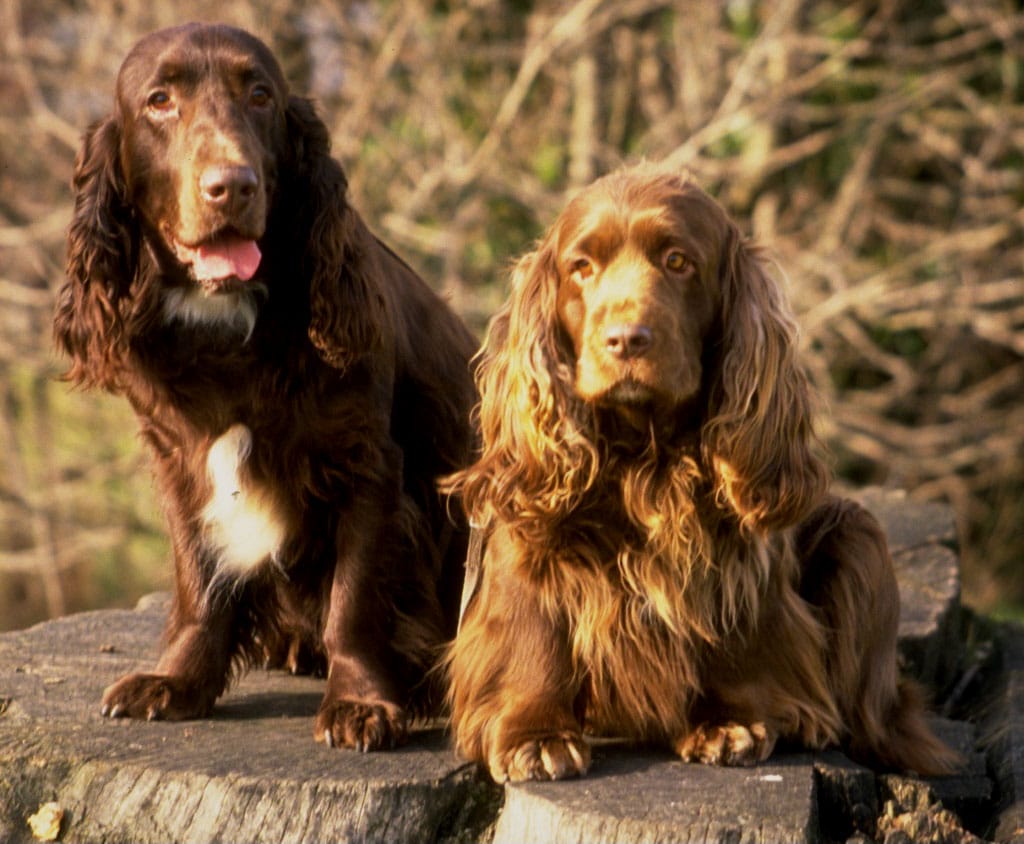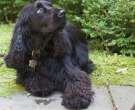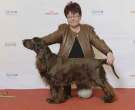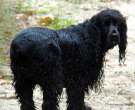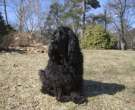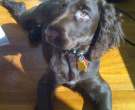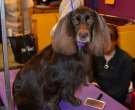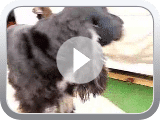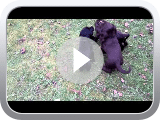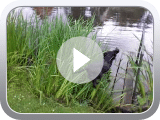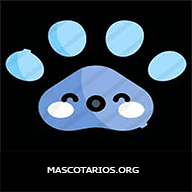Content |
|---|
History
The Labrador Retriever is a relatively recent breed and originated in Great Britain, where it was developed during the 19th century.
His ancestor, St. John's dog, comes from canada. Contrary to popular belief, is originally from the island of Newfoundland, of that St. John's is the capital, and not from the province of Labrador.
The exact origin of this ancestor is under debate, but the most accepted theory is that it descends from the Castro Laboreiro Dog, a dog that accompanied the Portuguese fishermen. another theory, supported by some experts, although not very plausible, is that the Labrador Retriever actually descended from the dogs used by Labradors Indians to pull sleds.
The truth is that many writings dating back to the 16th century speak of small dogs, sometimes presented as little Newfoundlands, who help local fishermen find the fish that have fallen out of the trap.
At the beginning of the 19th century, the qualities of this dog convinced the English visitors to the island, and then some specimens were imported to Great Britain. They caught the attention of the 2nd Earl of Malmesbury, who used these water dogs for hunting. He passed on his passion for these dogs to his son, who continued to develop the breed with the help of some local breeders. Was this son, the third Earl of Malmesbury, who gave name to the breed Labrador Retriever. But, no one knows if he did it as a tribute to the Labrador Sea, that borders the island of Newfoundland, or as a distortion of the Portuguese name Laboreiro.
In 1885, Lord Malmesbury, the third of the name, gave birth to a black dog named Buccleuch Avon, which is considered the ancestor of all Labradores current.
The Kennel Club británico (KC) recognized the breed already in 1903, but it wasn't until 1916 when Countess Lorna Howe founded the first breed club, who wrote the first standard of the Labrador Retriever.
It was also at the beginning of the 20th century when the breed was imported to the United States., to the point that the American Kennel Club (AKC) recognized the breed already in 1917.
Over the years 20, the standards of the different organizations evolved to accept yellow copies, while all Labrador Retriever they were originally black.
After World War II, the breed spread all over the world, earning recognition from the United Kennel Club (UKC) in 1947 y from the Fédération Cynologique Internationale (FCI) in 1954. Today it is accepted by all canine associations, including, for example, the Canadian Kennel Club (CKC).
Diffusion
The Labrador Retriever It, with difference, the most popular dog breed in the world. It is especially popular with Anglo-Saxons, for example, ranking first in Australia, Canada, Great Britain and United States. In this country, leads to head from 1991, with more than 100.000 annual registrations in the American Kennel Club (AKC). The same has happened in Canada since the end of the years 90.
Although its popularity does not diminish, can fluctuate significantly from year to year. In Great Britain, for example, there were more than 44.000 annual records of Kennel Club in 2010, but “only” a few 32.000 in 2015 and 35.000 in 2019.
In France, the situation is different. Although it is one of the 10 Most popular dog breeds in France, is not present in the head trio, and is even surpassed by the Golden Retriever. The popularity of the Labrador in France it soared over the years 80-90, going from less than 2.500 births registered each year in the Livre des Origines Français (LOF) at the beginning of the period about 10.000 at the end. Then, this figure decreased in the decade of 2000 (while the Golden ones shot up), until they are around 7.000. From 2013, rebounded, ending the year 2010 at around 8.000 births per year.
Physical characteristics
The Labrador it is a big animal, well built, but agile.
His body is massive and muscular, but not at all corpulent. His chest is wide, and the bowed ribs should be palpable under the skin. The legs are solid boned and end in round legs. The tail, known as “otter tail”, is a peculiarity of the breed and helps you swim. Very thick at the base, tapers towards the tip and is covered in short fringed hairs.
The skull is broad, with a well defined stop and a powerful muzzle. The nose has wide nostrils and is the same color as the fur. The eyes are more or less dark brown and express intelligence and good character.. The ears, placed towards the back of the skull, fall along the cheeks.
The coat of the Labrador Retriever consists of a dense, weather-resistant underlayer and a dense top layer, short and without ripples. To the touch, it is quite hard and rough. It is waterproof and dries quickly once out of the water.
The coat of the Labrador must be uniform, except for a possible small white spot on the chest. The breed standard only accepts three colors: the black (the original color), the yellow (the most common today, that goes from cream to red) and the brown (the least common, and sometimes called liver or chocolate). Silver color (Silver) it's not allowed, since it is due to a cross with the Weimaraner.
Last, the male is larger and more massive than the female, but this sexual dimorphism is not extremely marked either.
Height and weight
-
▷ Male size: Of 56 to 57 cm.
▷ female size: Of 54 to 56 cm.
▷ Male weight: Of 30 to 35 kg
▷ female weight: Of 30 to 33 kg
Varieties
Although they are not strictly varieties, the Labrador Retriever of work lines have some differences with those of exposure line. In general, the former are more agile and athletic, while the seconds are more solid and calm.
It also, the Labrador it is probably the most used breed for the creation of designer dogs. Among the many possible crosses, the most common are undoubtedly the Labradoodle (Labrador + Poodle), the Labsky (Labrador + Husky) and the Borador (Border Collie + Labrador).
Character and skills
The Labrador is loving, close to his family and incredibly sociable, to the point of being one of the races closest to humans. Love everyone: To his family, of course, but also to the neighbors, to the pizza delivery man, the stranger who is on a walk or the friendly thief who enters his territory and takes the time to caress him.
It is also an ideal dog with children of all ages, showing legendary patience when a little one plays with his ears or tries to play wheelie with him. And surely this is the reason why so many accidents are recorded every year: the fact that it is so conciliatory should not do without teaching children how to behave with an animal and respect it, so as not to exceed the limits of what you can tolerate. In any case, regardless of race, a dog should never be left with a young child without adult supervision.
The Labrador Retriever they not only enjoy the company of humans, they also love spending time with other dogs and get along wonderfully with cats and other small animals in the house. But, its size, his enthusiasm and his habit of putting everything between his jaws can be dangerous for small rodents, reptiles and birds, those who can accidentally hurt.
During its first two years, this dog is a ball of energy with insatiable curiosity and limited listening skills. Run, he plays and bites everything he finds: toys, shoes, plants, phone… It is better not to leave anything that is valuable or that could harm you.. When he becomes an adult, calm down, but he is still a very active dog, that you need at least an hour of exercise a day. Games and walks are a great way to help you exercise., and even the most sporty owners appreciate finding a companion who is always happy to be away, even after several hours of effort. On the other hand, not suitable for an elderly or very sedentary person.
In any case, although it does not tend to flee, his sociability and curiosity make him like to go see what happens everywhere and snoop. Thus, to avoid possible problems during walks, it is better to lead him on a leash so that he remains by his master's side.
Smart and helpful, to the Labrador Retriever likes to be useful. They stand out as assistance dogs, but they can also be content with more routine tasks. The missions of great importance, like bringing slippers or helping dig a hole to plant a tree, give you a sense of accomplishment. But it is capable of much more, and he loves dog sports like flyball, agility and obedience, that allow you to show all your qualities, both athletic and intellectual.
Water activities are another interesting way to spend your energy. Whether rolling in a puddle, jumping in the pool or swimming in the sea, to the Labrador Retriever She loves water. He is even an excellent swimmer, but he is not always lucid enough to estimate the strength of the current. Best kept on a leash near a dangerous area, such as a river with a strong current or an area of the ocean known for the speed of its currents.
Due to its size and activity level, not particularly suitable for apartment living, although it can be accommodated as long as its owner takes care of taking it out several times a day and allows it to get enough exercise. But, the ideal is a house with a garden, so you can exercise at your leisure. Even though i'm not a fugitive, it is better that the limits of its territory are clear, so that you do not venture to discover the neighborhood, risking getting lost or being the victim of a traffic accident. So, a fence is highly recommended.
The debate among specialists focuses on whether the Labrador is it an indoor or outdoor dog. It is clear that, because of its proximity to humans, the Labrador Retriever wants to spend as much time as possible with his family, and it's not a matter of keeping him away from her for days. But, it is undeniable that its origins, his physical characteristics and his energy make him happier outdoors. At the end, unless your family decides to live in a tent set up outside, there is no ideal solution, and both the master and the dog have to make concessions.
Last, to the Labrador not heard often, but when he barks, Everybody knows: its bark can reach the 110 dB.
Education
The Labrador Retriever is naturally open to humans and other animals, but this does not at all mean that their socialization should be neglected. From the first weeks, the puppy should have the opportunity to meet several people on a regular basis, crossing paths with other animals and being exposed to different situations. It is these experiences that allow you to become a calm and balanced adult, sociable and not aggressive.
In any case, the Labrador young is often difficult to manage for an inexperienced owner, especially if he has been constantly hearing praise about the character of the breed and expects everything to go smoothly. your excess energy, his propensity to bite everything he finds (shoes, furniture, phone…) and his inability to stay focused for more than a few seconds make some people wonder if his partner is having a problem.
The help of a professional canine educator can be useful during the first year, especially to help control its tendency to destroy everything that passes between its jaws, as well as withdrawal orders.
To the extent that Labrador Retriever it grows, becomes one of the easiest and most cooperative dog breeds to train, even for an inexperienced person. Their intelligence and desire to please make them quickly assimilate orders, and his passion for food makes the task even easier.
Knowing this, It goes without saying that positive reinforcement is the method of choice when training a Labrador Retriever. Compliments and pampering are appreciated, but sweets are usually even more so. But, should be used sparingly, since there is a risk of gaining weight.
As long as the owner is willing to spend time on their education and training, the possibilities of a Labrador they are immense, as demonstrated for decades by the thousands of representatives of this breed used as service dogs for the disabled or others. Dog shows, such as agility or obedience competitions, are another way to show the extent of your talents.
Health
The Labrador Retriever it is a robust breed with a remarkable life expectancy for its size, so much so that many specimens happily exceed the 15 years of age.
Its dense and waterproof fur protects it very well from the cold and bad weather., but also from the heat. Like this, adapts perfectly to all types of climates, although it must be able to take shelter when temperatures are extremely low and remain quietly in the shade in the event of a heat wave.
Despite his generally good health, the breed is still susceptible to various diseases. Most are common to all large dogs, but some are specific to him, and others are due to its popularity, which has led some breeders to privilege the quantity and not respect all the usual precautions. The most commons are :
- Hip Dysplasia, elbow dysplasia and shoulder dysplasia (u osteocondrosis), joint deformities that prevent the dog from moving normally. They can have a hereditary dimension, but since the carrier subjects are excluded from reproduction, the main cause today is simply growing too fast;
- Dilation-torsion of the stomach, a problem that is often caused by ingesting large amounts of food too quickly and often fatal without the prompt intervention of a veterinarian;
- Progressive retinal atrophy, an incurable degeneration of the eye tissue leading to total loss of sight, first at night and then also during the day;
- Centronuclear myopathy, an inherited disease that causes a loss of muscle mass;
- The nasal paraqueratosis (or hyperkeratosis of the nose), a hereditary disease characteristic of the breed and responsible for the lesions in the nose, which then acquires a dry and rough appearance. It is treated with medicinal creams that soften the affected tissues and does not affect the quality of life of the dog;
- Exercise-induced collapse, which causes the animal to collapse shortly after exertion. It is then necessary to adapt the dog's exercises to avoid those that are too intense., since this condition is incurable ;
- The epilepsy, that causes seizures and has no cure. But, treatment can reduce the frequency and intensity of these seizures, so that most individuals manage to continue with a normal life;
- The narcolepsy, causing a sudden loss of muscle tone and sudden drowsiness, sometimes in the middle of an action;
ear infections (otitis, etc.), due to the drooping shape of the ears, that traps dirt and moisture more easily; - Eye problems: cataract, entropion, retinal dysplasia…
Due to the immense popularity of the breed in recent decades, many diseases have been recorded in the Labrador, but they are still extremely rare. A study conducted in 2004 by the British Kennel Club and the British Small Animal Veterinary Association indicates that cancer and advanced age are the leading causes of death in this breed, since they account for more than half of all deaths. heart problems (heart attack, cardiomyopathy…) and cerebral vascular problems lag far behind, representing a running total of around 13% of the cases.
In day to day, the most common health problem in Labrador It, with difference, the obesity. His large appetite and his ability to convince his family that he deserves some extra croquettes make many representatives of the breed eat more than they should and are overweight. Only his master can protect him, respecting the recommended daily rations and not giving in to their incessant demands. This is not to be taken lightly, since obesity can not only aggravate pre-existing pathologies, but also provoke new ones.
Your appetite and your propensity to “comer” everything you find are also responsible for another risk to your health, especially during their first two or three years. Socks, toys and other small objects can cause a bowel obstruction when ingested and require surgical intervention. So, it is important not to leave anything lying around that can be swallowed, especially sharp objects.
Adopt from a serious breeder of Labrador Retriever dramatically reduces the risk of getting a puppy in poor health, for example with a hereditary disease. The fact that it is a member of the breed club is a guarantee of quality. In any case, in addition to the results of the genetic tests carried out on both parents and the puppy, must be able to present a certificate of good health issued by a veterinarian, as well as details of the vaccinations administered to the puppy, registered in your health or vaccination card.
Once the adoption is done, it is the owner's responsibility to keep their dog in good health throughout its life. As such, a routine visit to the vet is necessary at least once a year, although there are no problems on the horizon. Ensures that the animal is up to date with its vaccinations, but it also makes it possible to detect possible health problems in time that may not be noticeable at first glance. At the same time, the owner must make sure to regularly renew the antiparasitic treatments to his companion, so that it is permanently protected.
Life expectancy
13 years
Grooming
The maintenance of the coat of the Labrador Retriever is simple, since a weekly brushing is enough to remove dead hairs and dirt. If he Labrador Retriever molts throughout the year, the phenomenon is, of course, much more pronounced during its annual molt, in autumn and spring: it is then necessary to opt for a daily frequency to remove excess dead hair.
Being generally quite clean, does not need to bathe too often, at the risk of damaging your sensitive hair. The sebum that covers it (and that disappears in part during the bath) allows it to be waterproof and protects it from external elements. So, two or three bathrooms a year is a maximum, and it is advisable to systematically use a mild shampoo designed specifically for dogs, since the pH of your skin is not the same as that of humans.
If you've gotten dirty especially after a walk in the mud, it is advisable to simply rinse it with fresh water, without using shampoo. The same should be done after bathing in salt water or in a pool.
After any kind of bath, even in fresh water, dry your ears with a clean towel to prevent moisture from building up. Their fallen shape makes them a breeding ground for all kinds of inflammations and infections. (otitis, etc.). For the same reason, should be cleaned weekly to remove dirt and moisture.
The eyes should also be examined weekly and, if required, clean them with a damp cloth.
The weekly maintenance session is also an opportunity to brush your dog's teeth., which helps prevent problems related to plaque formation (bad breath, diseases, etc.). Ideally, do it more often., even daily. In any case, a toothpaste specially designed for dogs should always be used.
Last, wear and tear is usually enough to file your claws, but it is advisable to check once a month that it is so, and if нет, cut them manually. In effect, how long are they too long, that is to say, you can hear them rubbing against the ground when walking on hard surfaces, they can get in the way or even break and injure you.
Whether the fur, the ears, the eyes, teeth or claws, It may be helpful the first time to learn from a veterinarian or professional groomer what is required to maintain a Labrador Retriever. It is also important to get used to Labrador from a young age to avoid any subsequent problems.
Utility
Is often forgotten, but the Labrador Retriever it's basically a hunting dog, made to recover the hunt. Their ancestors were used to retrieve fish that fell from the net in the icy waters of the North Atlantic. When it was developed in England, learned to recover all kinds of game, but his predilection for the aquatic environment made him a specialist in aquatic birds.
Today he is still a waterfowl specialist, and his hunting dog skills continue to be appreciated around the world.
But, seem to be overshadowed by the qualities that make them an ideal pet, and it is clearly in this role that he finds himself most often all over the world. Child friendly, playful and active, sociable and incredibly attached to his family, the Labrador Retriever It is the quintessential family dog.
Its intelligence also makes it the most common breed among service dogs.. Whether used as a guide dog for the visually impaired, as a service dog for people with disabilities or as an emotional support dog (for example, for autistic people), rarely disappoints. Figures vary from country to country and association to association, but the proportion of Labrador retrievers among the dogs used in this context is generally between the 50 % and the 70 %.
He has also made a name for himself among the security forces, since their smell helps detect drugs, weapons and other prohibited products. He is also well known in the search for victims and missing persons..
as expected, the Labrador Retriever also shines in beauty pageants, to the point of being a regular on the catwalk at dog shows.
It is also frequently found on the podiums of dog sports competitions, especially in agility tests, obedience and flyball.
Last, there is only one role that he is absolutely incapable of playing: the guardian. Doesn't bark when a stranger approaches, and if you have the good idea to pet him or even give him some treat, then you are welcome home, be it good or bad intention…
Price
The price of a puppy Labrador Retriever round the 950 EUR, without great differences between males and females. But, this average hides great disparities, since the quantities requested range from 500 euros for specimens with characteristics far from the standard up to more than 2500 euros for puppies from exceptional lines and intended for dog shows.
regardless of the country, price differences from one individual to another may be due to the reputation of the breed, to the more or less prestigious ancestry of the puppy, as well as its intrinsic characteristics, starting with its proximity to the standard. It also, This last point explains why price differences can be observed within the same litter..
Characteristics "Labrador Retriever"
Coexistence is important that you have with your new friend. Before considering the acquisition of a dog of the breed "Labrador Retriever" you know certain factors. Not all breeds of dogs are apt to live in an apartment, you must take into account his character, their need for exercise, their interaction with other pets, their care and if you have small children, their level of tolerance towards them.
Adaptation ⓘ2.0 out of 5 stars (based on 1 review)
|
friendly dog ⓘ5.0 out of 5 stars (based on 1 review)
|
hair loss ⓘ3.0 out of 5 stars (based on 1 review)
|
|---|---|---|
Affection level ⓘ5.0 out of 5 stars (based on 1 review)
|
Need for exercise ⓘ5.0 out of 5 stars (based on 1 review)
|
Social need ⓘ5.0 out of 5 stars (based on 1 review)
|
Home ⓘ4.0 out of 5 stars (based on 1 review)
|
Toilet ⓘ2.0 out of 5 stars (based on 1 review)
|
Friendly with strangers ⓘ5.0 out of 5 stars (based on 1 review)
|
barking ⓘ3.0 out of 5 stars (based on 1 review)
|
Health ⓘ3.0 out of 5 stars (based on 1 review)
|
Territorial ⓘ2.0 out of 5 stars (based on 1 review)
|
Cat friendly ⓘ4.0 out of 5 stars (based on 1 review)
|
Intelligence ⓘ4.0 out of 5 stars (based on 1 review)
|
Versatility ⓘ4.0 out of 5 stars (based on 1 review)
|
Child friendly ⓘ5.0 out of 5 stars (based on 1 review)
|
Surveillance ⓘ1.0 out of 5 stars (based on 1 review)
|
joy ⓘ5.0 out of 5 stars (based on 1 review)
|
Images “Labrador Retriever”
Videos “Labrador Retriever”
Type and recognitions:
- FCI CLASSIFICATION:
- Group :
- Section : . .
Federations:
- – FCI – Group 8: Retrievers - Flushing Dogs - Water Dogs – Section 1: Retrievers ⓘ
- – AKC – Sporting ⓘ
- – ANKC – Group 3 (Gundogs) ⓘ
- – CKC – Sporting Dogs ⓘ
- – KC – Gundog ⓘ
- – NZKC – Gundog ⓘ
- – UKC – Gun Dogs ⓘ
FCI breed standard "Labrador Retriever"
Alternative names:
1. Lab, Labrador (English).
2. Labrador retriever, Labrador (French).
3. Labrador (German).
4. Retriever do Labrador, Labrador, Lab (Portuguese).
5. Lab, Cobrador de Labrador, Perdiguero de Labrador, Labrador (español).

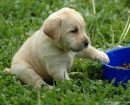
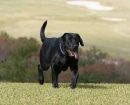
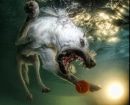
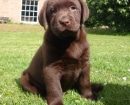

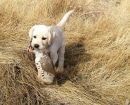
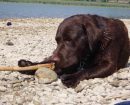
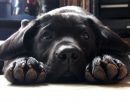
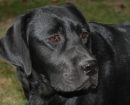
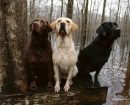
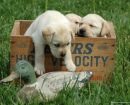
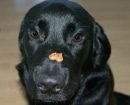
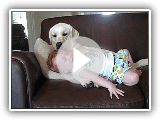 If you like cute dog & baby stuff, you’ll love this….
If you like cute dog & baby stuff, you’ll love this….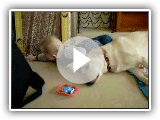 Best friends
Best friends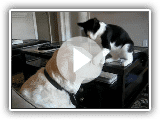 Cat and Dog Play Fighting
Cat and Dog Play Fighting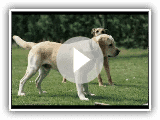 Labrador retriever
Labrador retriever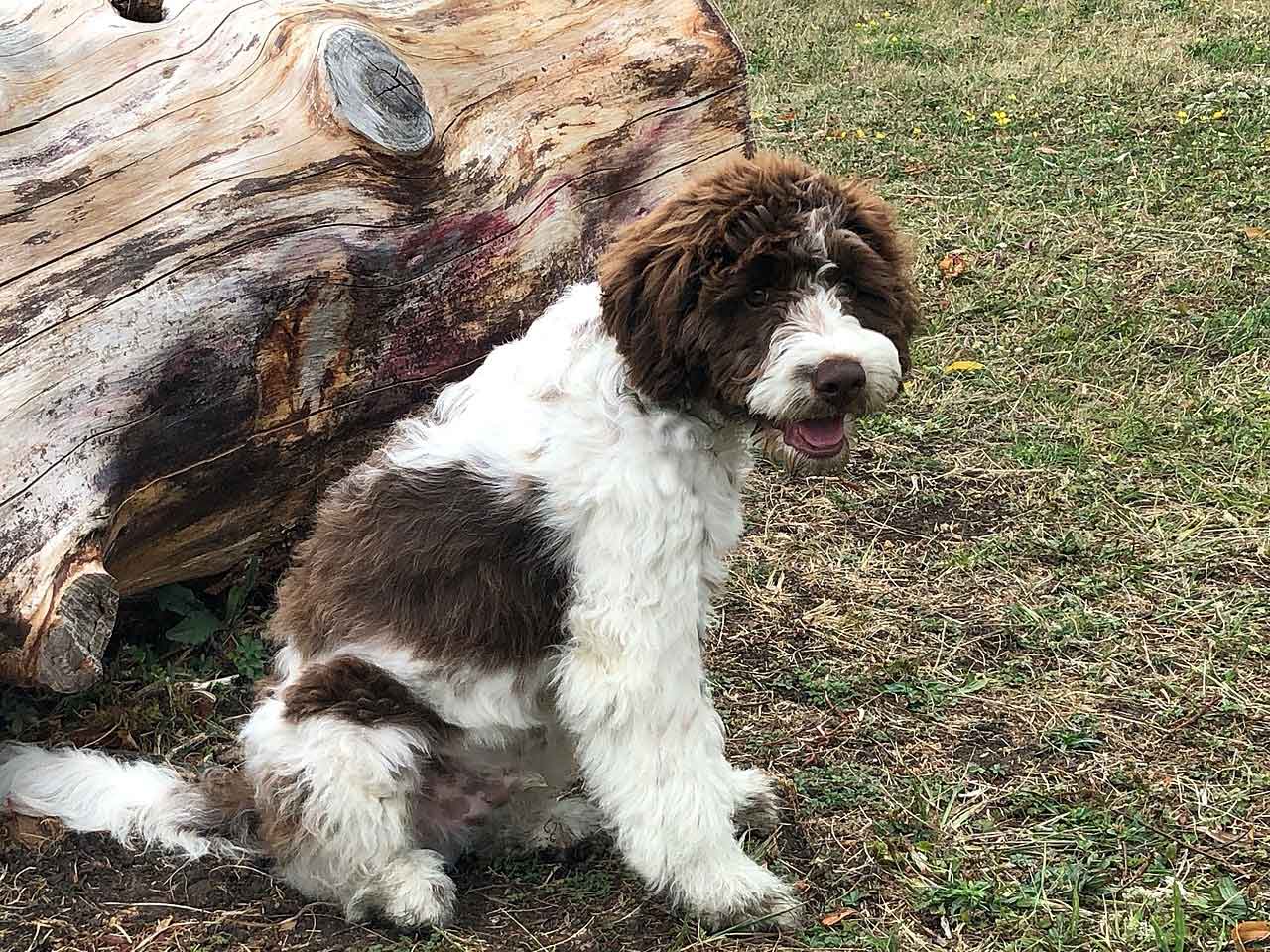
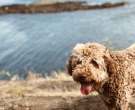
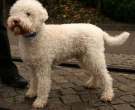
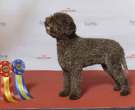
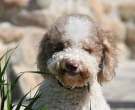
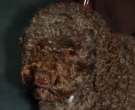
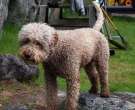
 Lagotto Romagnolo - Dog Breed / Dog Breed
Lagotto Romagnolo - Dog Breed / Dog Breed Obedience with Ernest Lagotto Romagnolo HD Quality!
Obedience with Ernest Lagotto Romagnolo HD Quality! Nora's first love (Lagotto Romagnolo)
Nora's first love (Lagotto Romagnolo) Dog Breed Video: Lagotto Romagnolo
Dog Breed Video: Lagotto Romagnolo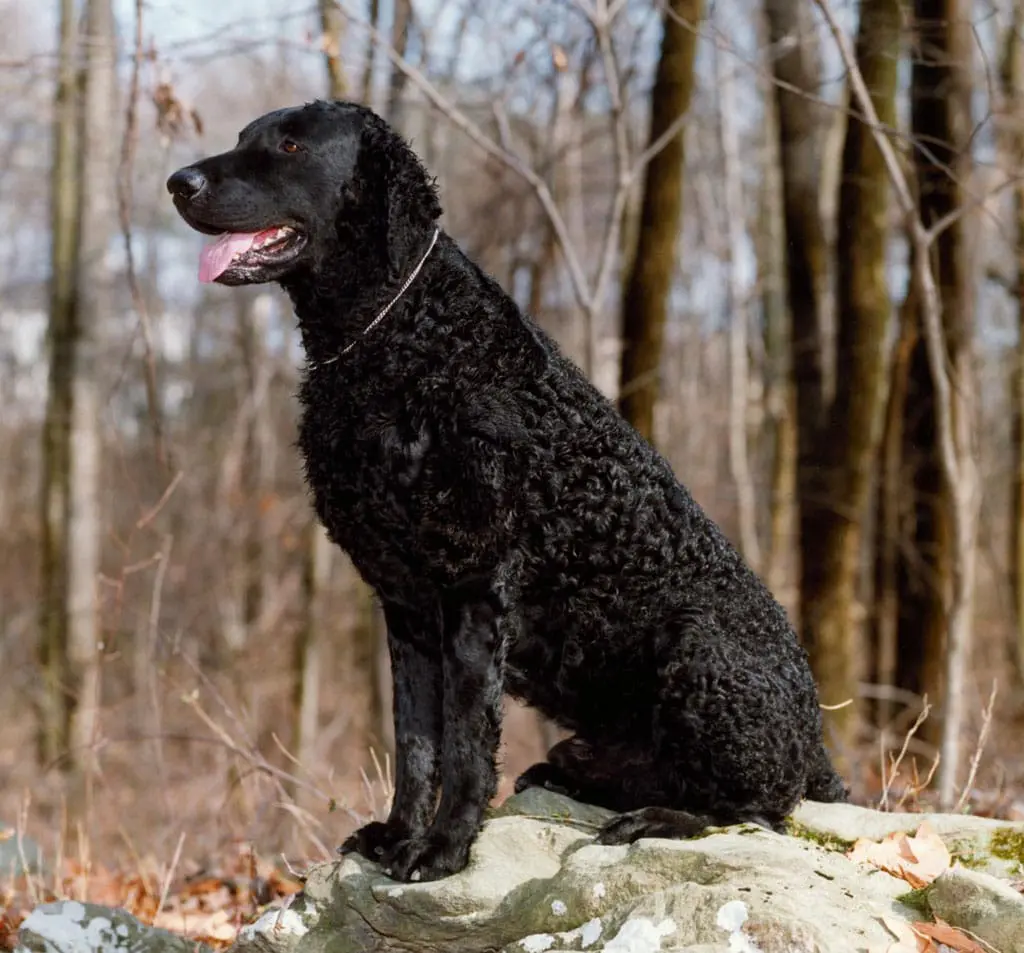
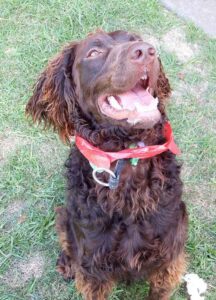
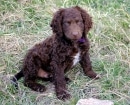
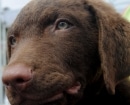

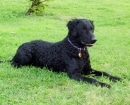
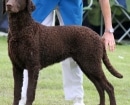
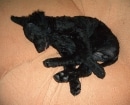
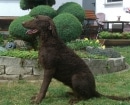
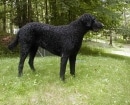

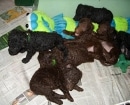

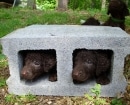
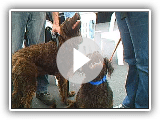 Murray River Curly Coated Retrievers
Murray River Curly Coated Retrievers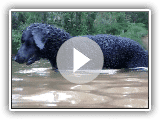 Curly Coated Retriever swimming
Curly Coated Retriever swimming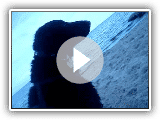 curly coated retriever Balto at the beach:)
curly coated retriever Balto at the beach:)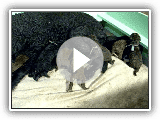 Curly-Coated Retriever Puppies
Curly-Coated Retriever Puppies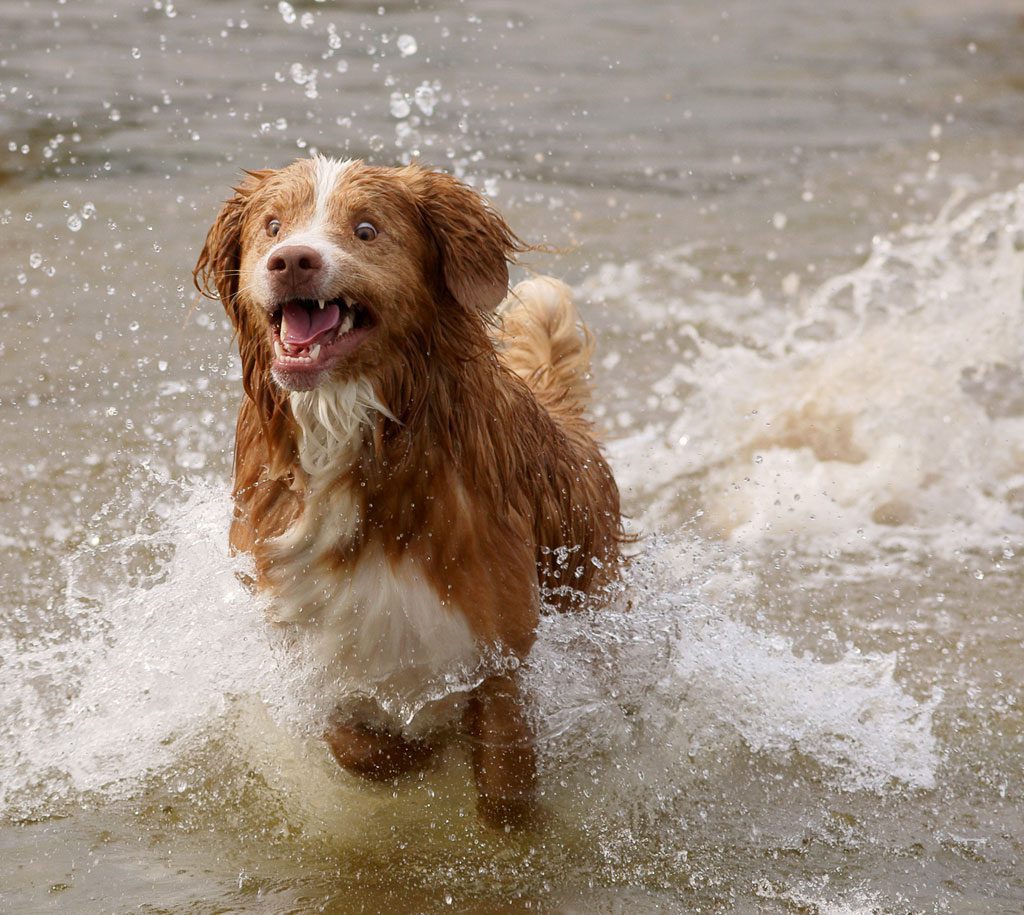
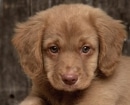
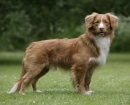
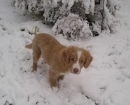
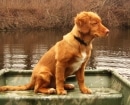
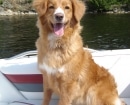
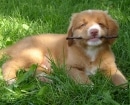
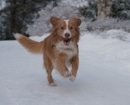
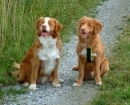
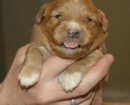
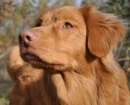
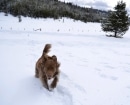
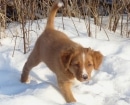
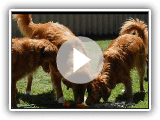 What I love about Tollers……
What I love about Tollers……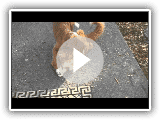 Tabby versus Nova Scotia Duck Tolling Retriever (Whiskers and Moxie)
Tabby versus Nova Scotia Duck Tolling Retriever (Whiskers and Moxie)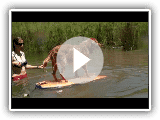 Moses Balances on a Body Board in the Quarry, Upper Ferntree Gully
Moses Balances on a Body Board in the Quarry, Upper Ferntree Gully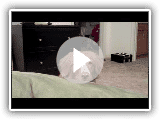 Bored Toller
Bored Toller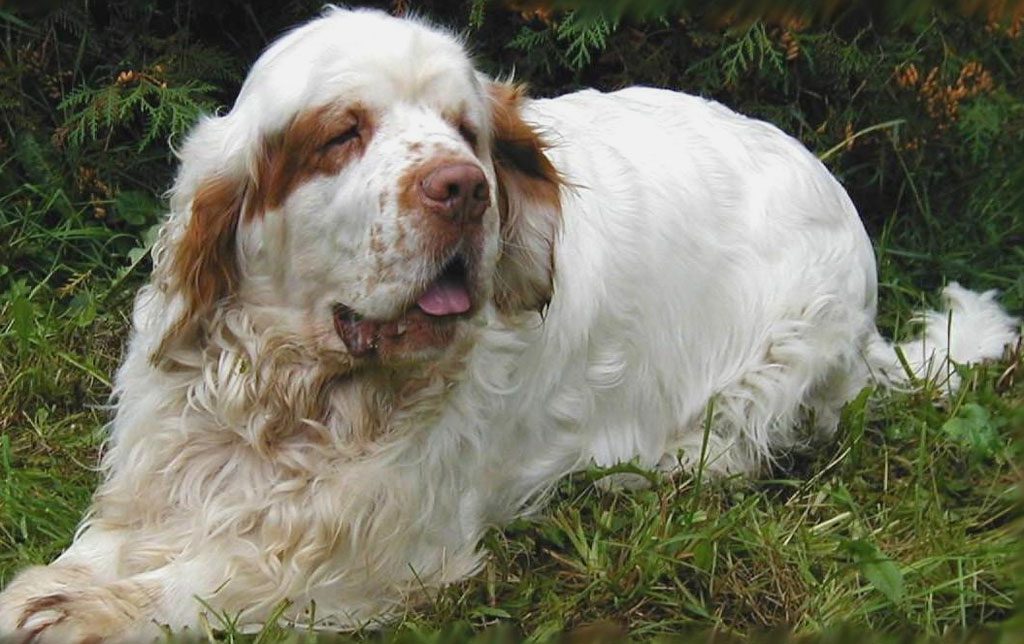
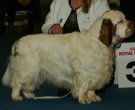
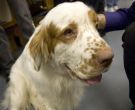
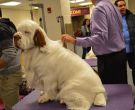
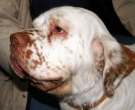
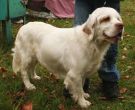
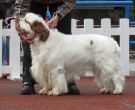
 Clumber Spaniel
Clumber Spaniel AKC’s Meet the Clumber Spaniel
AKC’s Meet the Clumber Spaniel Dogs 101 – Clumber Spaniel
Dogs 101 – Clumber Spaniel Working Clumber Spaniel
Working Clumber Spaniel
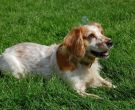
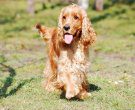
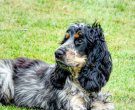

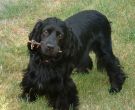
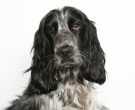
 English Cocker Spaniel
English Cocker Spaniel Dogs 101 – ENGLISH COCKER SPANIEL – Top Dog Facts About the ENGLISH COCKER SPANIEL
Dogs 101 – ENGLISH COCKER SPANIEL – Top Dog Facts About the ENGLISH COCKER SPANIEL Cocker spaniel ingles – CaracterÃsticas, character and training of the COCKER
Cocker spaniel ingles – CaracterÃsticas, character and training of the COCKER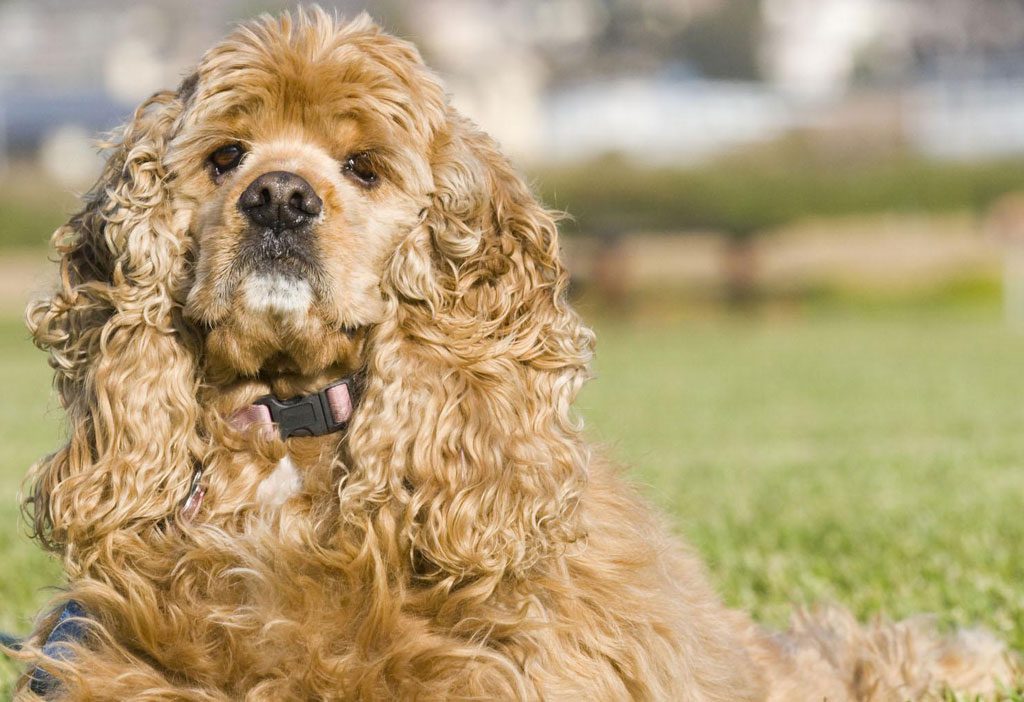
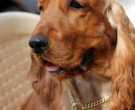
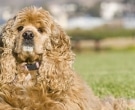
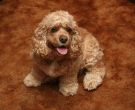
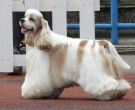
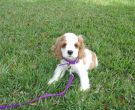
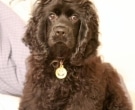
 Features of breeding American Cocker Spaniel- TvAgro by Juan Gonzalo Angel
Features of breeding American Cocker Spaniel- TvAgro by Juan Gonzalo Angel Breed All About It – American Cocker Spaniel
Breed All About It – American Cocker Spaniel American Cocker Spaniel
American Cocker Spaniel Dogs 101 – AMERICAN COCKER SPANIEL – Top Dog Facts About the AMERICAN COCKER SPANIEL
Dogs 101 – AMERICAN COCKER SPANIEL – Top Dog Facts About the AMERICAN COCKER SPANIEL